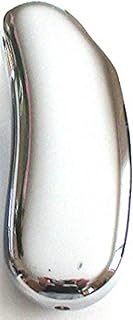The Future of the BIC Lighter: Sustainability and Innovation
The BIC lighter, an iconic symbol of affordability and convenience, stands at a crossroads. The ubiquitous plastic lighter faces challenges in an increasingly sustainability-conscious world. However, with innovation and a focus on responsible practices, BIC can navigate this path and secure a future for its iconic product.
Here's a look at key aspects shaping the future of the BIC lighter:
Sustainability:
* Material Shift:
* Bioplastics: Replacing traditional plastic with bio-based alternatives derived from renewable sources like corn starch or sugarcane.
* Recycled Plastics: Utilizing recycled materials to reduce reliance on virgin plastic production.
* Post-Consumer Recycled (PCR) Plastics: Using recycled plastics from consumers to minimize plastic waste.
* Refill Systems: Implementing refillable lighters with replaceable flint and fuel cartridges, reducing overall waste and extending the lifespan of the lighter.
* Sustainable Manufacturing: Implementing energy-efficient production processes, reducing emissions and waste during manufacturing.
* End-of-Life Solutions: Developing responsible recycling or disposal programs for lighters, ensuring they don't end up in landfills.
Innovation:
* Smart Features: Integrating smart technologies like Bluetooth or NFC for features like remote ignition, fuel level tracking, and even personalized flame adjustments.
* Design Evolution: Exploring innovative designs for more ergonomic, efficient, and user-friendly lighters.
* Alternative Fuels: Researching and developing safer and more environmentally friendly fuels, potentially exploring renewable biofuels or hydrogen-based options.
* Safety Features: Implementing advanced safety mechanisms like child-resistant locks, temperature control, and flame-resistant materials to enhance user safety.
Challenges and Opportunities:
* Cost and Availability: Shifting to sustainable materials and implementing innovative features can increase production costs. Finding cost-effective solutions without sacrificing quality will be crucial.
* Consumer Acceptance: Consumers may need to be convinced about the value and benefits of sustainable and innovative features, requiring strong marketing and education efforts.
* Regulations and Standards: Navigating evolving regulations and standards related to materials, fuels, and safety features will be crucial.
* Innovation Ecosystem: Collaborating with research institutions, technology providers, and other stakeholders in the supply chain will be essential for driving innovation and finding sustainable solutions.
Conclusion:
The future of the BIC lighter hinges on its ability to adapt and innovate. By embracing sustainability, exploring new technologies, and engaging with consumers, BIC can redefine its iconic product to meet the evolving demands of the market. Embracing a greener future will not only secure the brand's long-term success but also contribute to a more sustainable and responsible consumer landscape.


